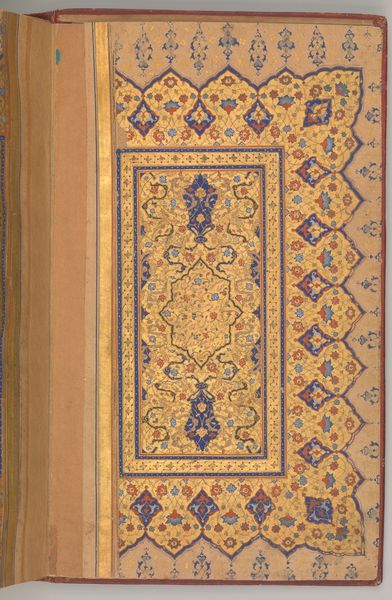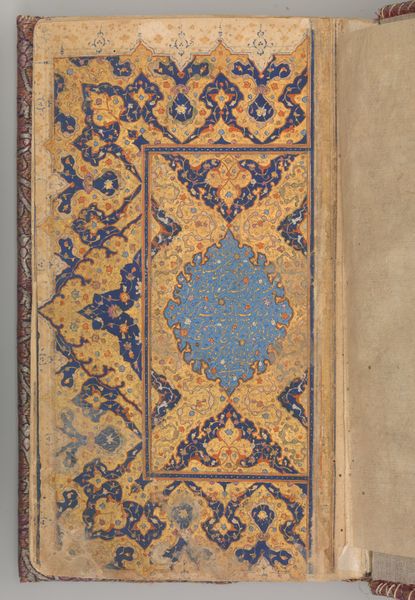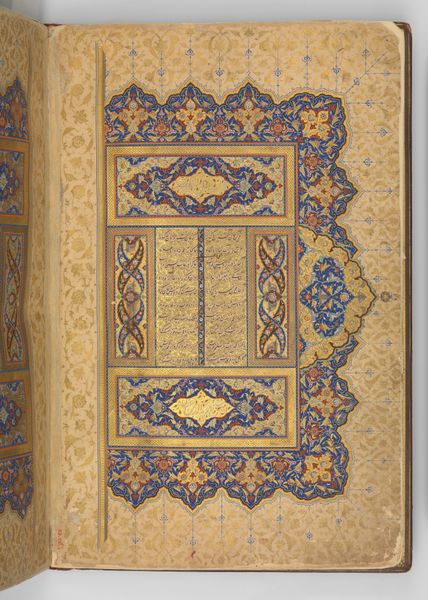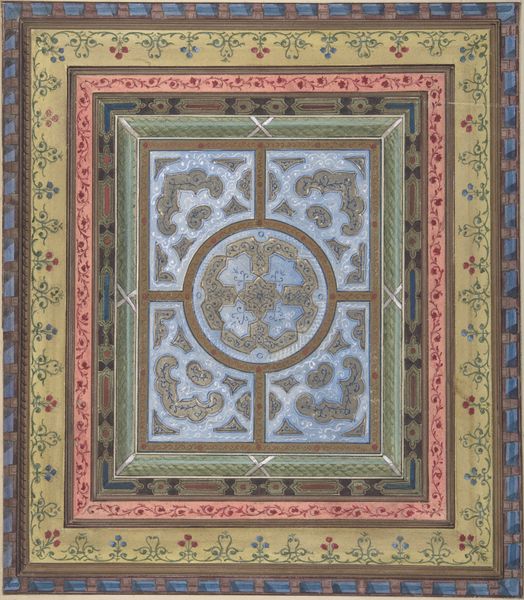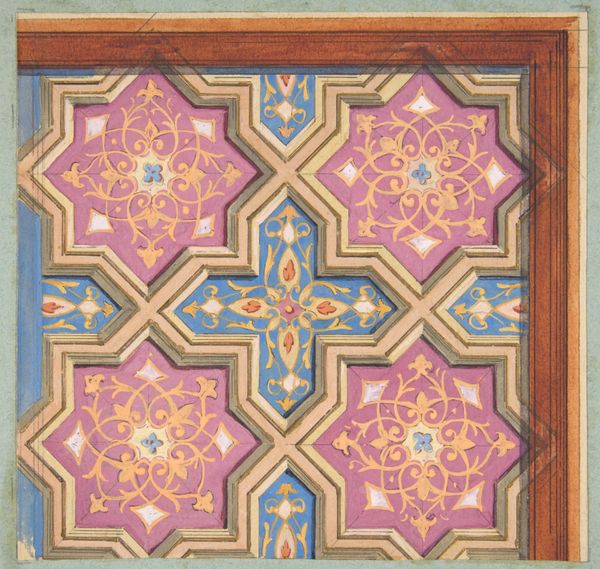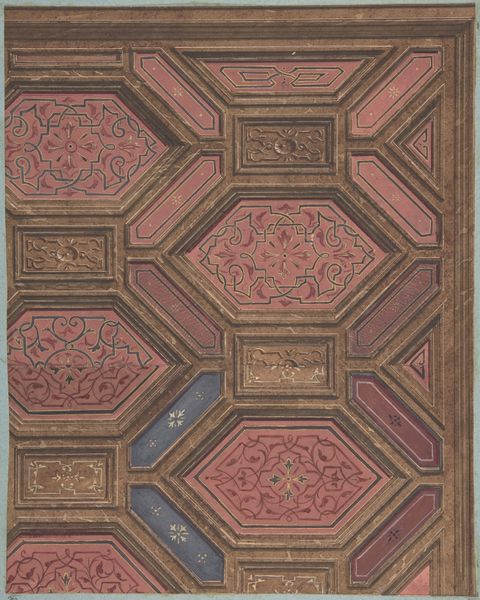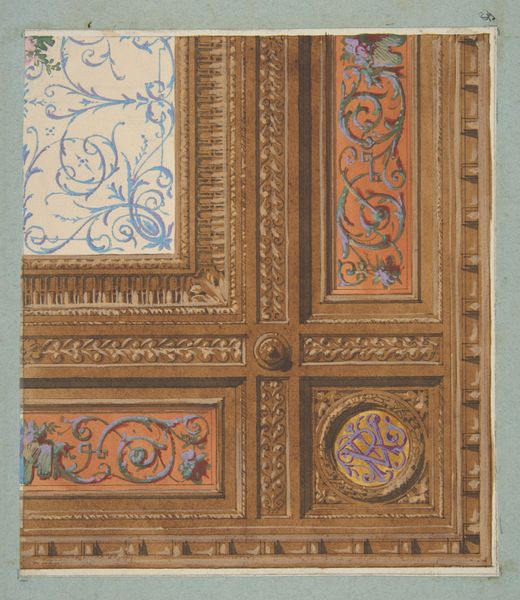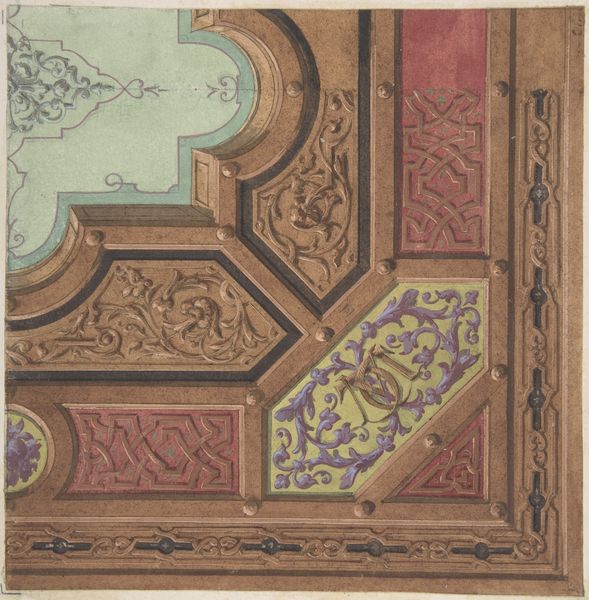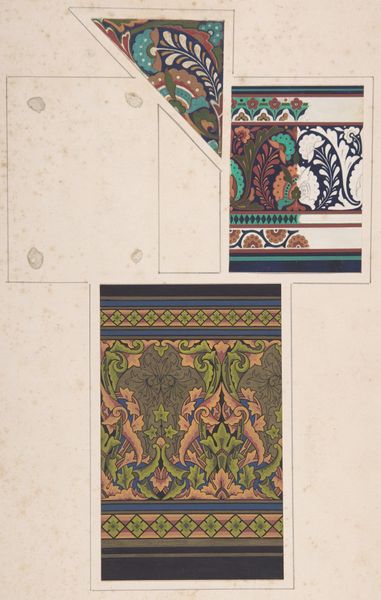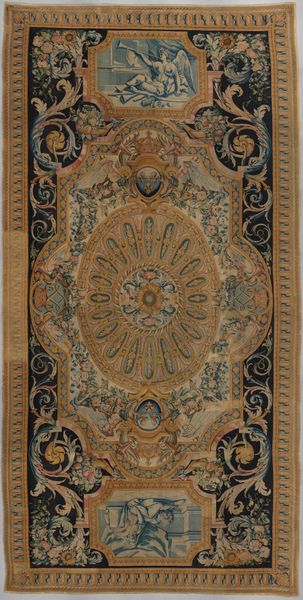
Islamic Ceiling Design for Deepdene, Dorking, Surrey 1875
0:00
0:00
drawing, print
#
drawing
# print
#
geometric pattern
#
geometric
#
islamic-art
Dimensions: 9 x 5 1/2 in. (22.9 x 13.9 cm)
Copyright: Public Domain
Curator: Wow, there's something about this drawing, "Islamic Ceiling Design for Deepdene, Dorking, Surrey," from 1875, by Jules-Edmond-Charles Lachaise that feels like peering into a secret garden, doesn’t it? It's playful and meticulously ornate all at once. Editor: Yes, and I find myself thinking about Deepdene House and its complicated legacy in relationship to empire. Built in Surrey for Thomas Hope, a man whose family wealth derived from their role as merchants facilitating the enslavement of human beings in the Dutch colonies. Curator: That context really reframes how I see it. Initially, I was captivated by the sheer aesthetic beauty, the sinuous lines, the almost dizzying array of floral motifs against the pale-yellow backdrop. The artist really managed to blend precision with a sense of organic flow, if that makes any sense. Editor: It does, but it also asks me to think about what this ornamentation obscures. Orientalism often carries a complex power dynamic where cultural elements are extracted from their original context and employed within a Western framework. Curator: So, how does the drawing itself complicate that reading, or does it? I’m just so drawn to how, even though it’s a fragment, you can still imagine this ceiling stretching infinitely in every direction, this incredibly ornate kaleidoscope overhead. Editor: I see the attraction to its aesthetic appeal, and its geometry echoes sacred designs and cosmological patterns characteristic of Islamic art. However, the recontextualization is key here: It now lives in the Met collection, another potential signal for who it aims to speak to. Curator: Right. Almost like a captive, isn’t it? But you know, thinking about ceilings… They’re inherently about looking up, aspiring to something greater. So maybe, in its own way, it still invites that sense of wonder, even within these colonial confines. Editor: That’s a lovely sentiment, and art does often occupy a paradoxical space, don’t you think? Appreciating the craft while remaining cognizant of the circumstances that birthed and framed the artwork feels like our ultimate responsibility. Curator: Absolutely. It’s like… we have to hold onto both the beauty and the baggage to really see the whole picture. Thanks for pulling me down from the clouds for a minute! Editor: My pleasure. Now, shall we go find another object with similar quandaries to unpack?
Comments
No comments
Be the first to comment and join the conversation on the ultimate creative platform.
